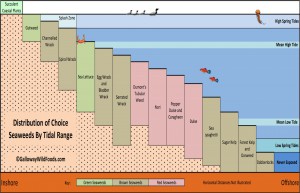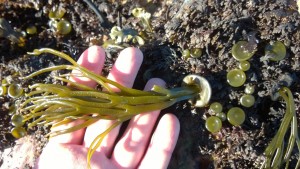Sea spaghetti – Identification, Edibility, Distribution
Himanthalia elongata, AKA Thongweed
Habitat: Lower rocky shores, especially in semi-exposed locations
Identification: Hard to mistake – up to 2m long yellowy brown spaghetti-like fronds, dividing near the base, growing from small, button-like holdfasts.
Edible Uses: Young fronds are good raw or pickled in salads. Once they get longer than about 20cm, they are best cooked. Full grown, they can be a little tough. As the name suggests, you can treat them like spaghetti.
Harvest: Best in spring and summer, becoming gradually tougher. Be sure to leave the perennial button-like holdfast intact to regrow.
Related pages:



1 Comment
Great page ! Iv always loved seaweed but never foraged it except sea lettuce so all the info is greatly appreciated